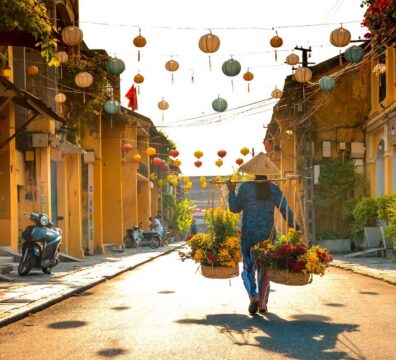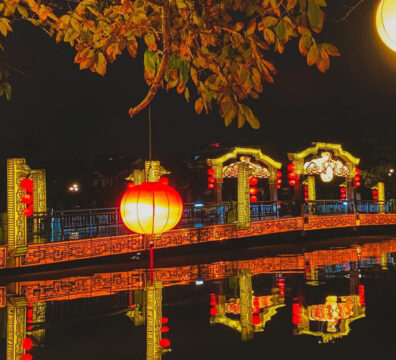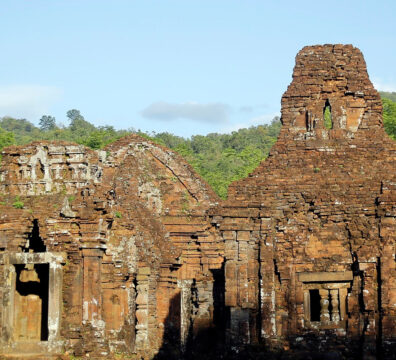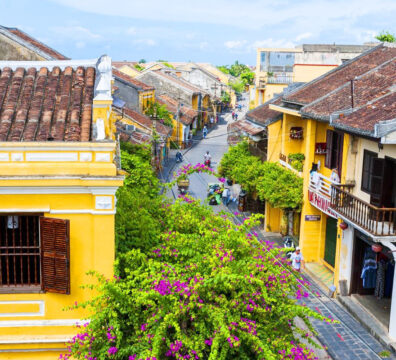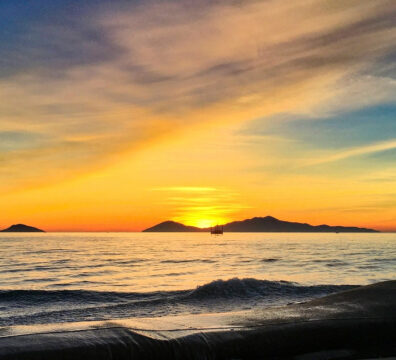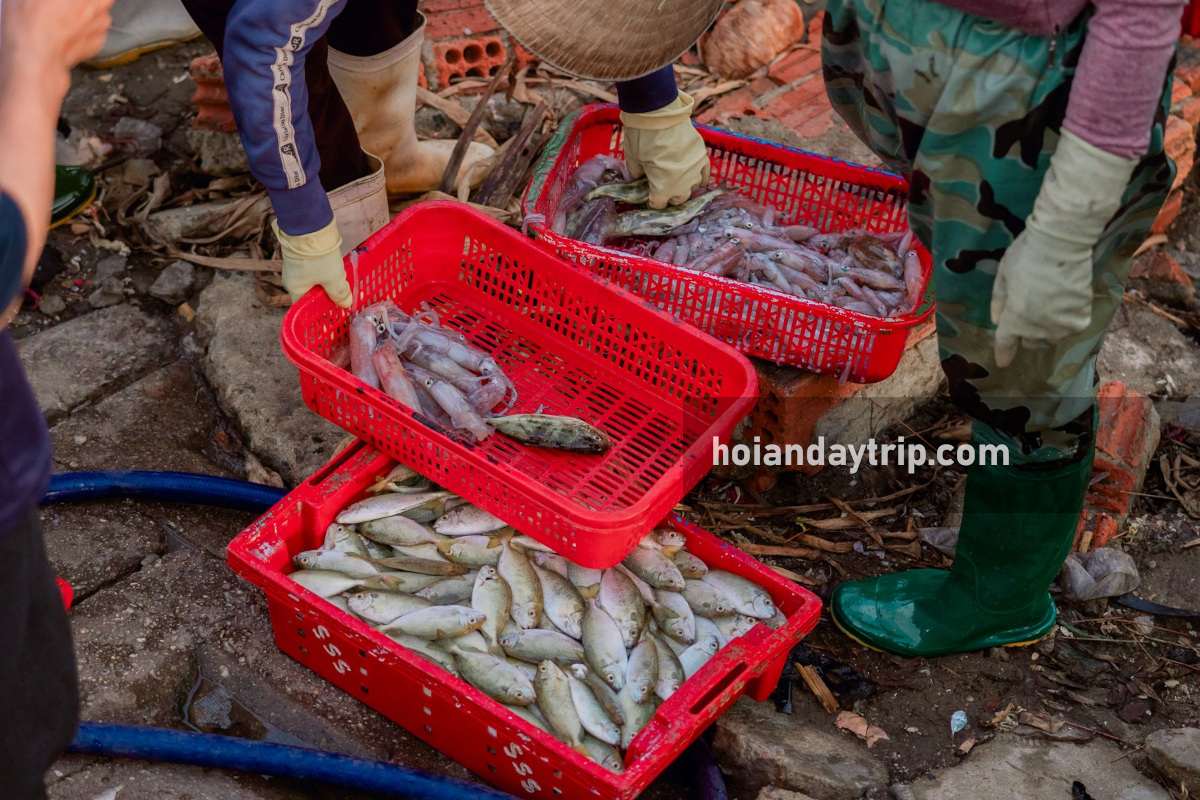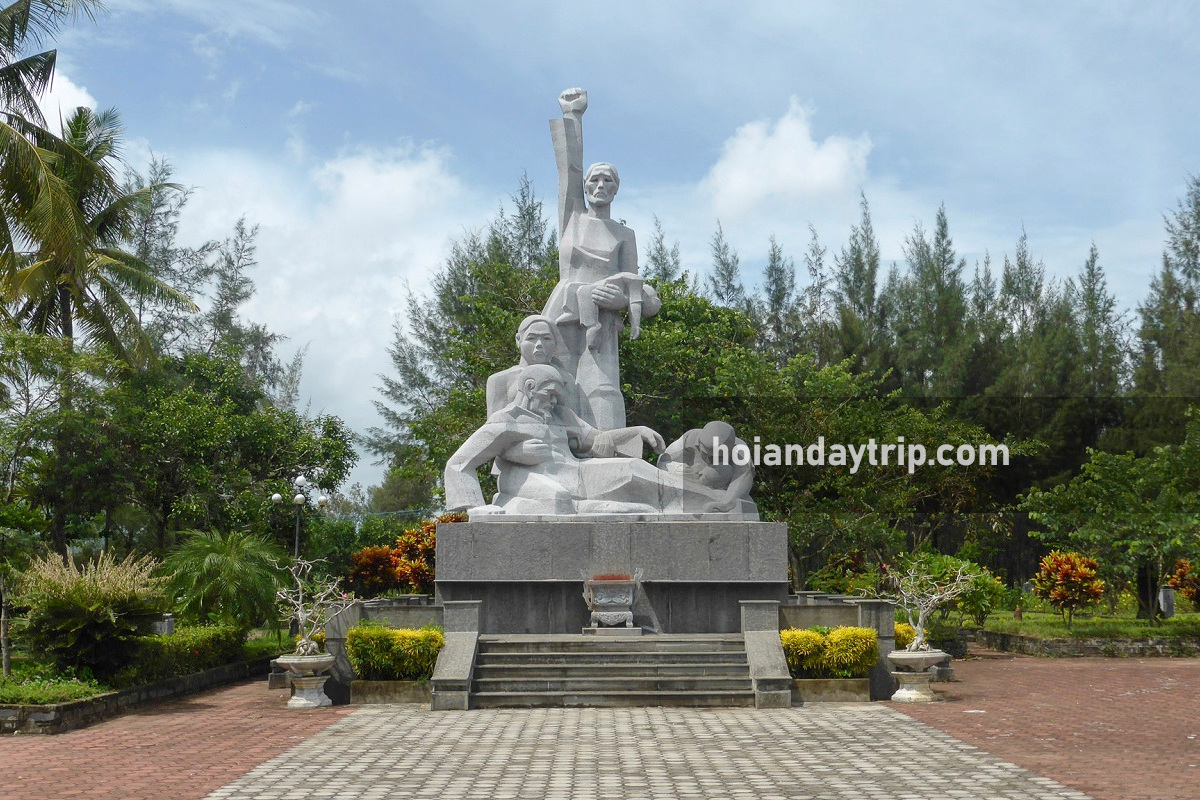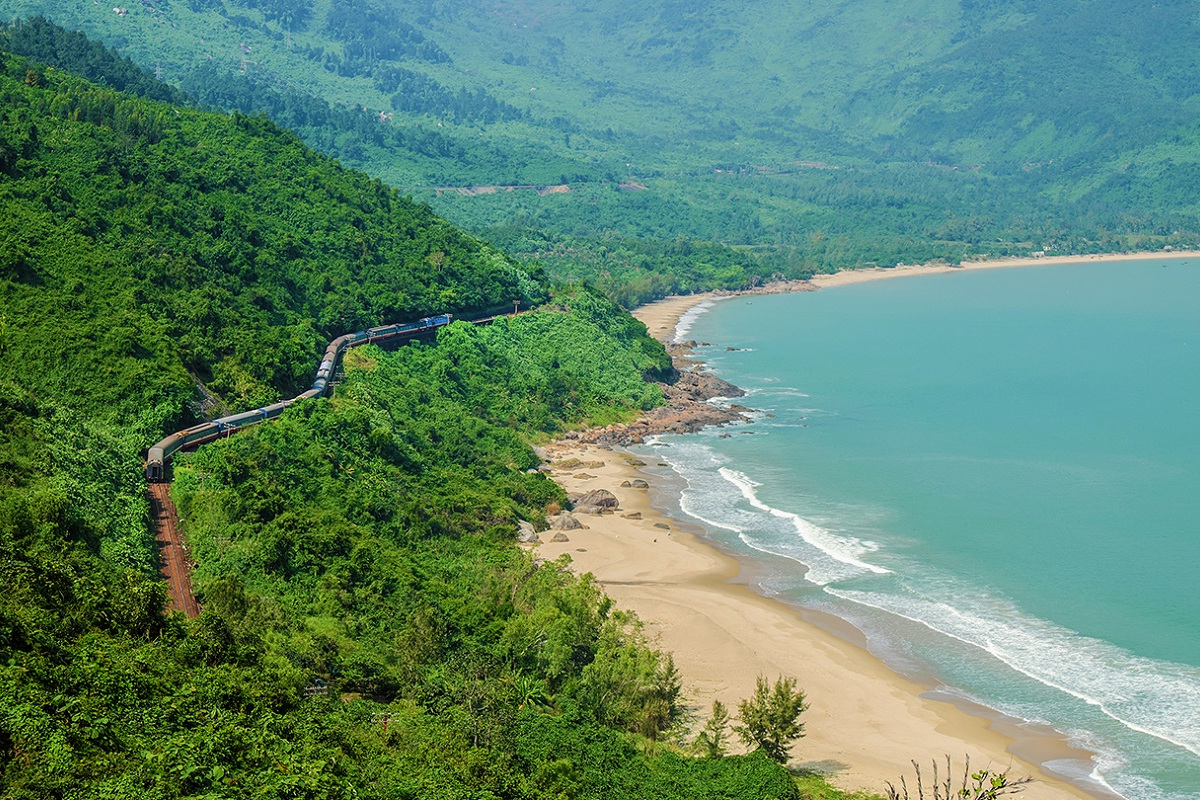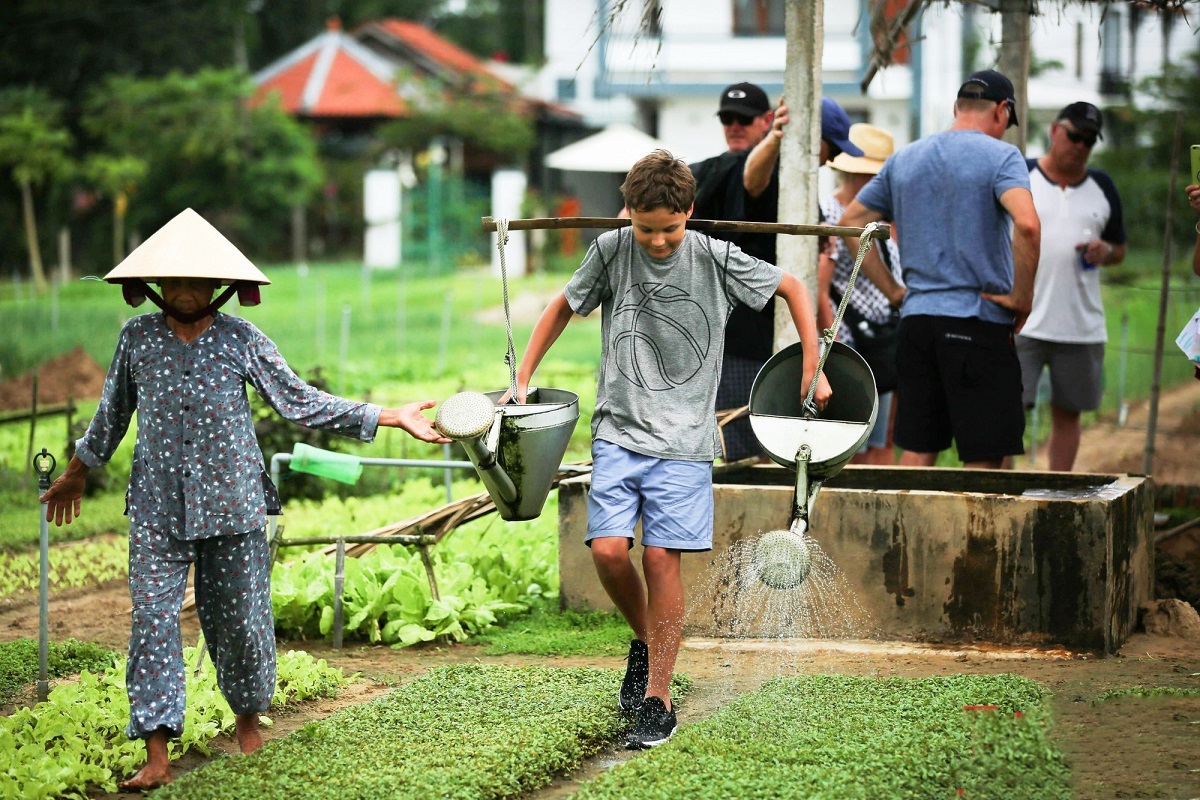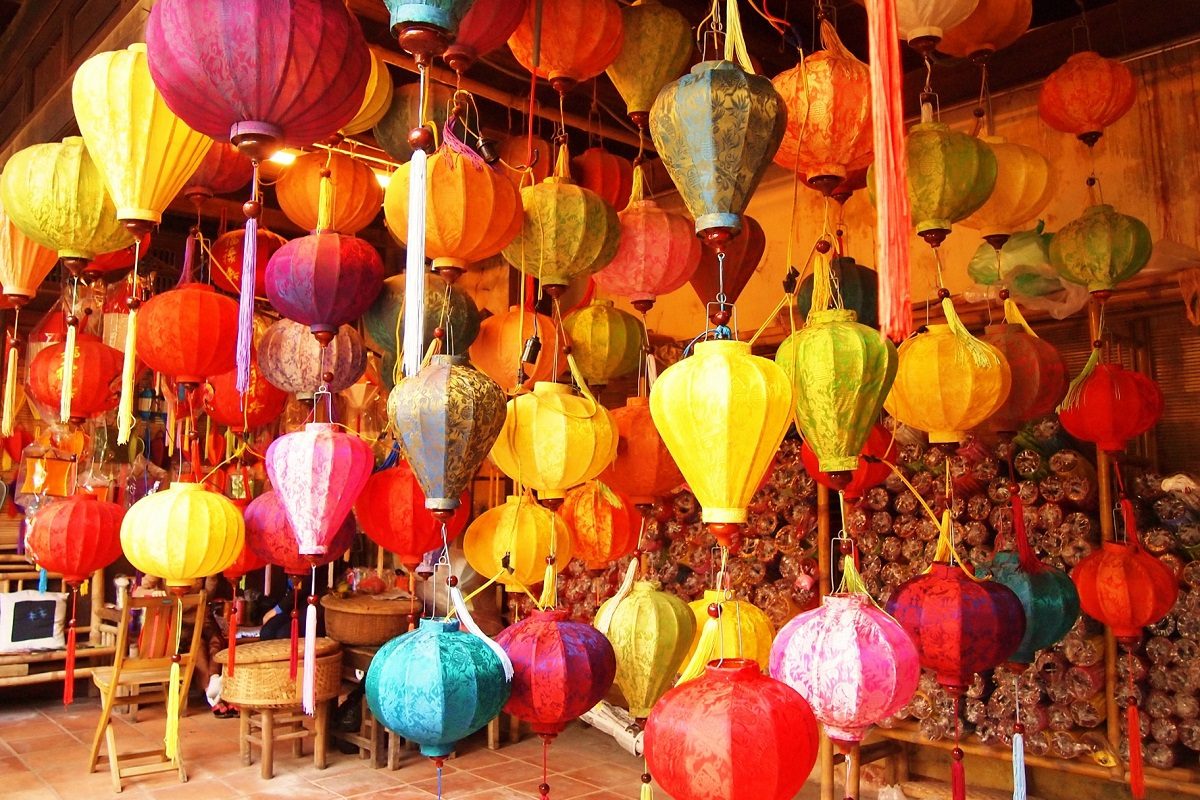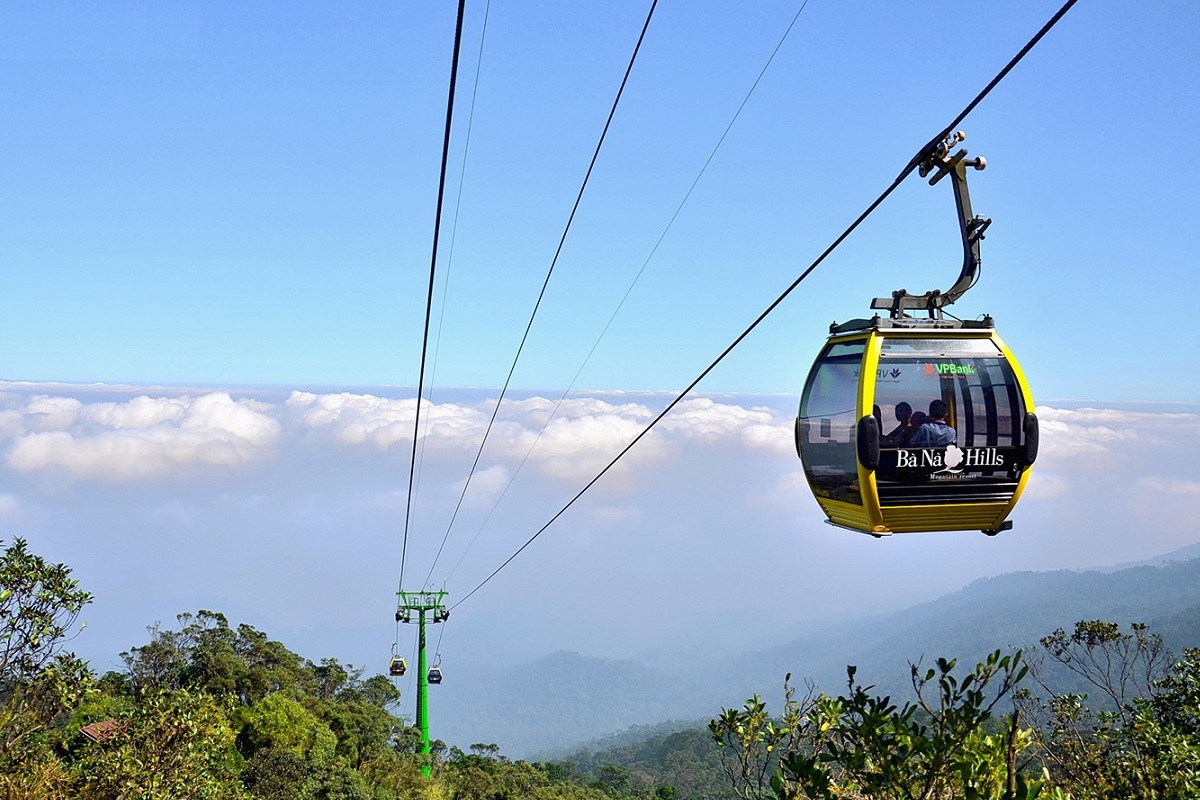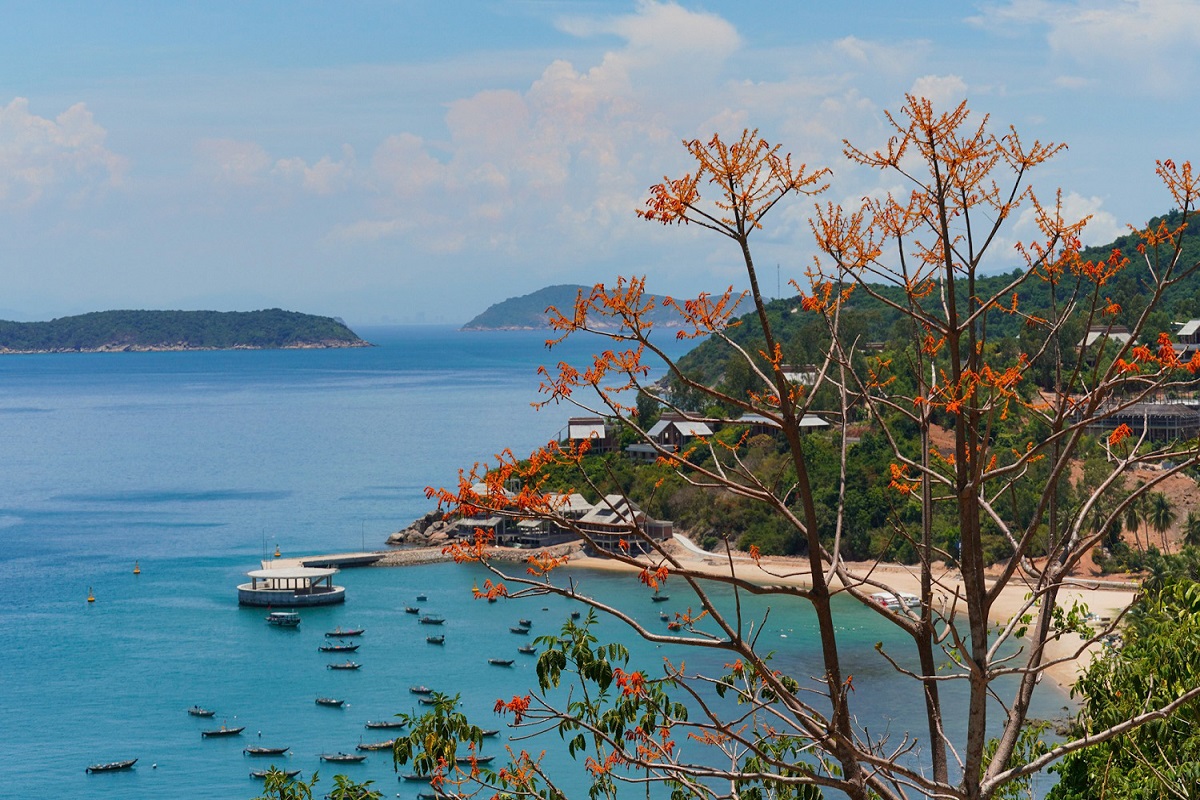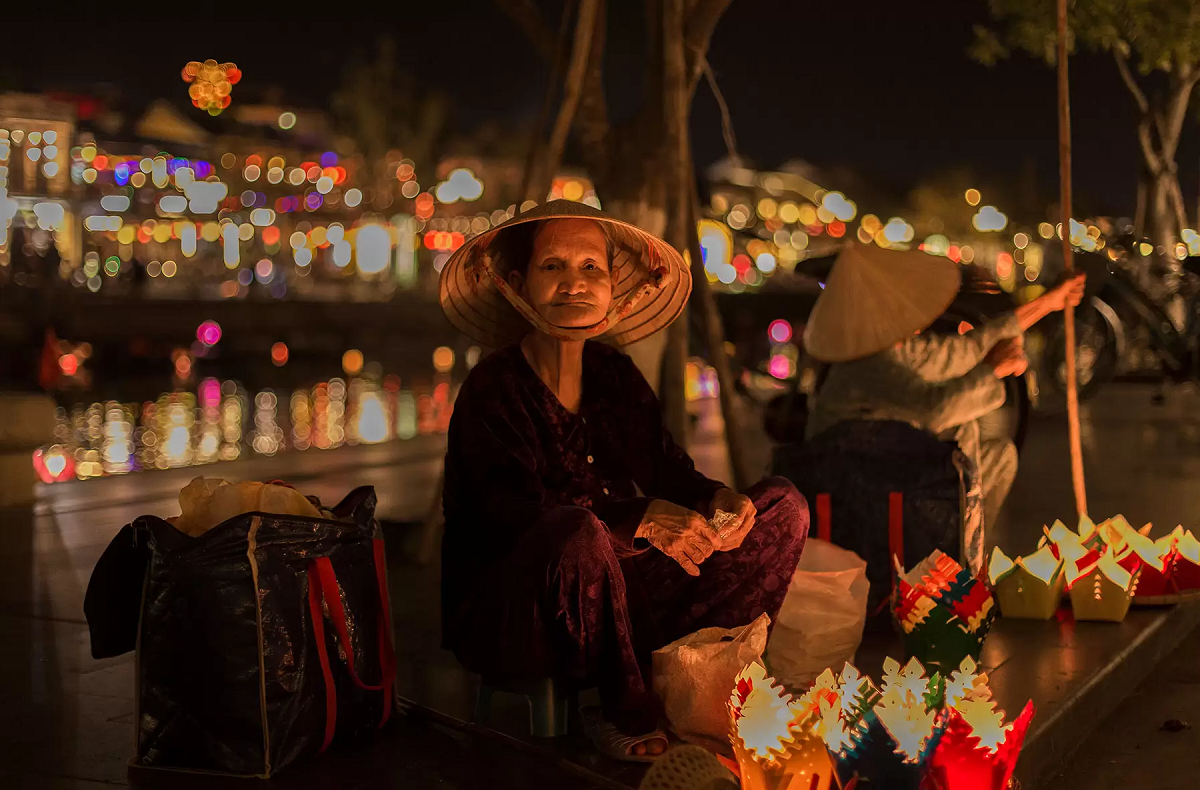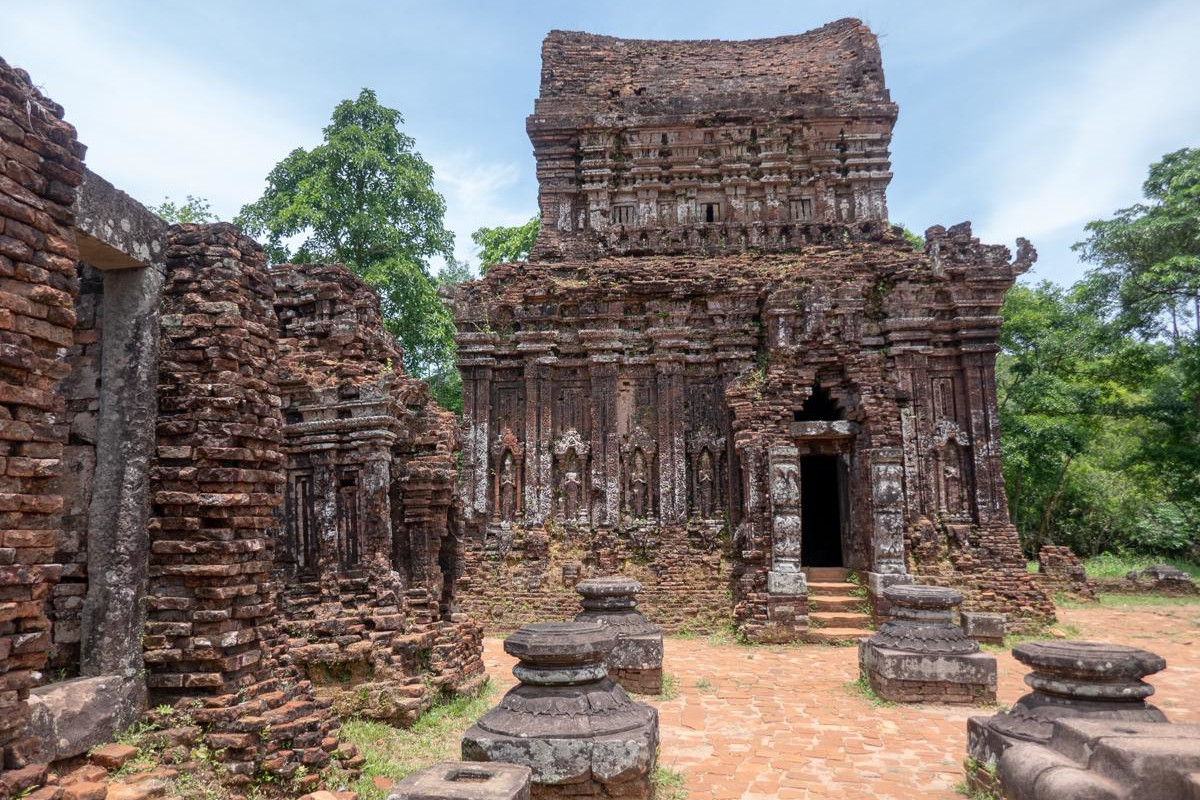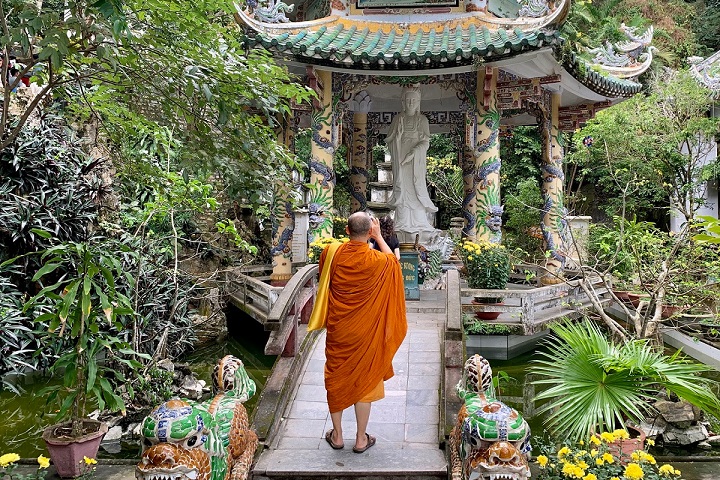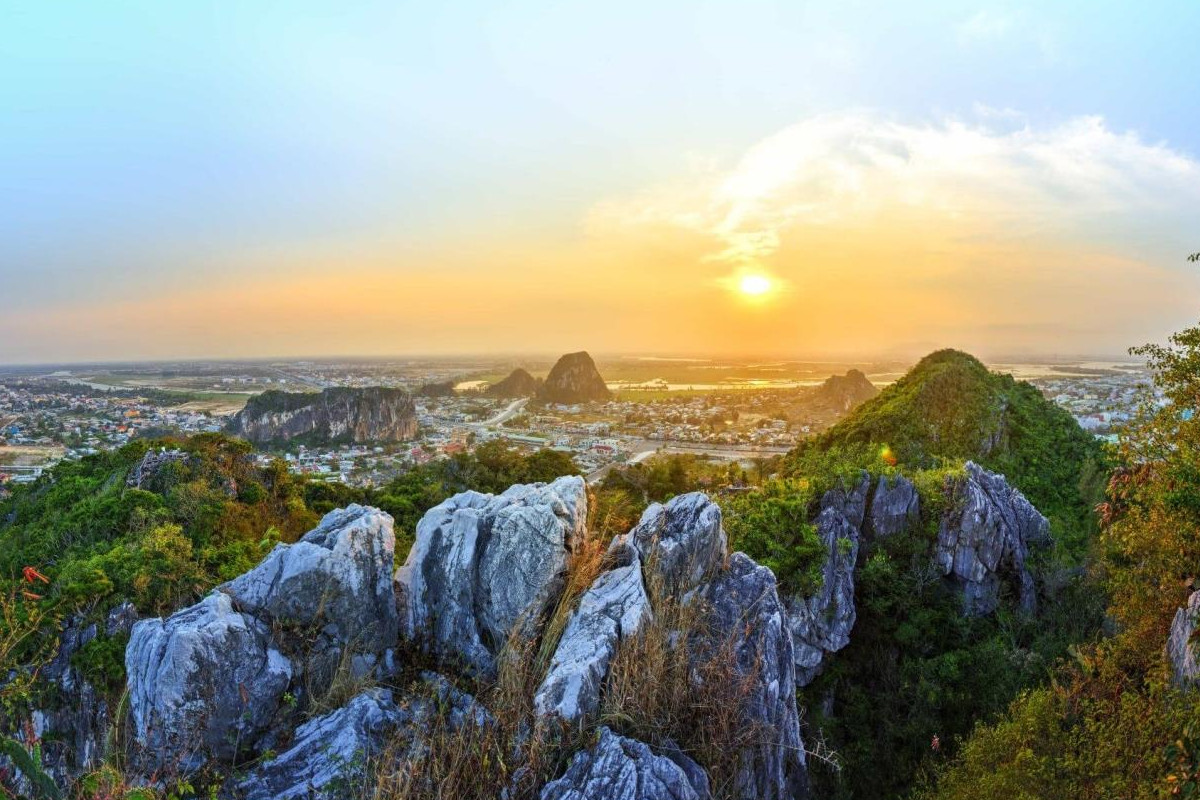Hoi An won the title “Asia’s leading cultural destination” recently in a reputable global travel award. It’s a pretty riverine-coastal town with an ancient root, surrounded by peaceful pieces of countryside. 5,3 millions is the largest number of tourists who visit and stay overnight in Hoi An. So, why do people love this world heritage site city? Above all, its old town is the first reason. It is a well-preserved trade port that flourished from 15th to 19th centuries, with diverse merchandise. Unlike others in the region, Asian cultures dominate here. Nowadays, the townies still continue their grandfather and father businesses, typically tailors. Lanterns are another attraction, anywhere in town. No travellers want to miss the brilliant scene of lanterns at night, foremost, the Full Moon festival. Close sandy beaches, abundant cuisine, and more things that urge people to go.
This guide is dedicated to the weather in different seasons and all months of the year in Hoi An. Thanks to that, it’s easier for travellers to make a plan, avoid or improvise severe phenomenon such as typhoons, floods or pouring rains. We highly recommend reading the guide to the best time to visit Hoi An, to know deeper analysis and comparisons.
Read also:

Table of content
- 1 Hoi An Weather All Year Round
- 2 The Best Month to Visit Hoi An
- 3 Hoi An Weather in January
- 4 Hoi An Weather in February
- 5 Hoi An Weather in March
- 6 Hoi An Weather in April
- 7 Hoi An Weather in May
- 8 Hoi An Weather in June
- 9 Hoi An Weather in July
- 10 Hoi An Weather in August
- 11 Hoi An Weather in September
- 12 Hoi An Weather in October
- 13 Hoi An Weather in November
- 14 Hoi An Weather in December
- 15 Related Posts
- 16 Bach Ma National Park: Hiking, Trekking in Da Nang and Hoi An
- 17 Hoi An Wet Season: What to Do in Hoi An When It Rains?
- 18 Thanh Ha Terracotta Park
- 19 Vinwonders Nam Hoi An Theme Park (formerly Vinpearl Nam Hoi An)
- 20 Am Phu Cave (Hell Cave) – Things to Do in Da Nang
- 21 Hoi An or Hue: Which is Better?
- 22 The Official Hoi An Travel Guide (MUST READ)
- 23 The Hoi An Market (Hoi An Central Market) Complete Guide
- 24 Hoi An Memories Show: The Best of Hoi An Impression Theme Park
- 25 Hoi An Bridge: Famous Bridges in Hoi An
- 26 How to Get From Hoi An to My Son Sanctuary
- 27 Hoi An’s Chinese Assembly Halls and Chinese Temples
- 28 Hoi An Walking Tours: Heritage, Foods, Photography & Locals
- 29 Hoi An Self Guided Walking Tour – Hoi An On Your Own
- 30 How to Visit Golden Bridge Vietnam
- 31 Unique Experiences in Hoi An and Why?
- 32 An Bang Beach: A Guide to Hoi An’s Best Beach
- 33 Experiences in Hoi An: Get Insight Into Hoi An’s Local Culture
- 34 Things to Do in Ba Na Hills Besides Golden Bridge
- 35 Hoi An Nightlife: What to Do in Hoi An At Night?
- 36 Hoi An Countryside: Villages, Rice Fields & Tours
- 37 How to Get to Golden Bridge From Hoi An
- 38 Hoi An Entrance Fee: Old Town, Golden Bridge, My Son, More
- 39 Hoi An Airport: Everything You Need to Know
- 40 Hoi An Lantern Boat Ride on Hoai River
- 41 Hoi An Private Car and Driver
- 42 What to Do in Hoi An Ancient Town
- 43 Da Nang and Hoi An Itinerary for Visitors Staying Overnight in Hoi An
- 44 Hoi An 3 Day Itinerary: A Travel Plan for 3 Days in Hoi An
- 45 Hoi An Free Things to Do: Budget Travel in Hoi An Vietnam
- 46 Featured Tours and Experiences
- 46.0.1 Bach Ma National Park Tour from Hue
- 46.0.2 Bach Ma National Park Tour from Da Nang/Hoi An
- 46.0.3 Hoi An Sunrise Fish Market Tour
- 46.0.4 My Lai Massacre Tour
- 46.0.5 Golden Bridge/Ba Na Hills & Hoi An Tour
- 46.0.6 Hoi An Instagram Tour
- 46.0.7 Ky Anh Tunnel & Tam Thanh Mural Village Tour
- 46.0.8 Da Nang to Hue Motorbike Tour with Hai Van Pass & Easy Rider (1 Way)
- 46.0.9 Hue to Da Nang Motorbike Tour with Hai Van Pass & Easy Ride (1 Way)
- 46.0.10 Hue to Hoi An Motorbike Tour with Hai Van Pass & Easy Rider (1 Way)
- 46.0.11 Hoi An to Hue Motorbike Tour with Hai Van Pass & Easy Rider (1 Way)
- 46.0.12 Tra Que Vegetable Village Tour with Cooking Class
- 46.0.13 Ba Na Hills Half Day Tour from Hoi An
- 46.0.14 Marble Mountain & Hoi An Day Tour from Da Nang Port
- 46.0.15 Hue Day Tour from Chan May Port with Lunch
- 46.0.16 Marble Mountain & Hoi An Tour from Chan May Port
- 46.0.17 Ba Na Hills/Golden Bridge Tour from Da Nang Port
- 46.0.18 Ba Na Hills/Golden Bridge Tour from Chan May Port
- 46.0.19 Golden Bridge Private Tour with Ba Na Hills & Lunch
- 46.0.20 Ba Na Hills Afternoon Tour with Golden Hands Bridge
- 46.0.21 Ba Na Hills Private Tour with Golden Hands Bridge
- 46.0.22 Ba Na Hills Half Day Tour with Golden Bridge
- 46.0.23 Ba Na Hills Early Morning Tour to Beat the Crowds
- 46.0.24 Golden Bridge and Ba Na Hills Night Tour
- 46.0.25 Golden Hands Bridge Tour In Sunrise or Sunset (1/2 Day)
- 46.0.26 Cam Kim Island Bicycle Tour From Hoi An
- 46.0.27 Cham Island Tour From Hoi An (Group Tour)
- 46.0.28 Cham Island Tour From Da Nang (Group Tour)
- 46.0.29 Hoi An Vegetarian Food Tour
- 46.0.30 Hoi An Evening Walking Food Tour with Local Foodie
- 46.0.31 Private Hoi An Basket Boat Tour (Shuttle Bus, Bicycle, Bike)
- 46.0.32 Half-day Am Phu Cave Tour (Private)
- 46.0.33 Hoi An Countryside Tour by Electric Car or Bike
- 46.0.34 Da Nang Tour Package From Singapore
- 46.0.35 Hoi An Evening Tour From Da Nang with Lantern Boat Ride
- 46.0.36 Hoi An Walking Food Tour Through Laneways
- 46.0.37 My Son Sanctuary and Hoi An Old Town Tour
- 46.0.38 My Son Day Trip From Hoi An including Marble Mountains and Basket Boat
- 46.0.39 Half Day Hoi An City Tour With River Cruise
- 46.0.40 Son Tra Peninsula Tour with Marble Mountains (Private/Small Group)
- 46.0.41 Hue Day Trip From Hoi An with Hai Van Pass, River Cruise & Lunch
- 46.0.42 Hoi An Ancient Town and Countryside Tour (Bests of Hoi An Tour)
- 46.0.43 Hoi An Tour From Da Nang Airport (Private, Optional Lunch)
- 46.0.44 Hoi An Day Trip From Da Nang (Marble Mountains, Basket Boat, Old Town)
- 46.0.45 Da Nang City Tour From Airport (Private, Optional Lunch)
- 46.0.46 Hoi An City Tour with Lantern Class, Lantern Boat, Night Market & Local Food Sampling
- 46.0.47 Marble Mountains, Basket Boat Ride & Hoi An Old Town Walking Tour
- 46.0.48 Marble Mountains & Golden Bridge/Ba Na Hills Day Tour
- 46.0.49 Marble Mountains & Monkey Mountain Tour (Half-day, Private)
- 46.0.50 Private Golden Bridge Sunrise Tour (Half-day, Optional Lunch)
Hoi An Weather All Year Round
Seasons in Hoi An
Hoi An Dry Season
Hoi An’s dry season stretches from February to August, featuring high temperatures, many daylight and sunshine hours, and a low rainfall. The warmest time is from June to August, with an average high temperature of 33oC. The driest month of the year – March is also in this season. If planning to visit Hoi An in the dry season, travellers need to prepare a set of sun protection gear, swimsuit and lightweight, cool clothes to wear.
Hoi An Rainy Season
The rest of the year, from September to January, is the wet season in Hoi An. Its characteristics are rain for many days and high chance of typhoons. The first one makes the temperature go down, with the smallest average high degrees of 25oC and low degrees of 19oC in January. October is the rainiest month, with more than 20 days of rain. If traveling at this time, visitors need to bring a rain poncho/umbrella at least, and other necessary things are waterproof shoes, jacket (the end of year).
Hoi An Typhoon Season
The span of time from September to November has the highest potential of typhoons in the wet season. No surprise, it’s the wettest period of the whole year because of pouring rains, and has the most severe weather. When typhoons occur, skies are covered by dark clouds, and the sea is with big waves caused by strong winds. Due to estuary location, Hoi An old town and nearby lowlands are flooded.
Hoi An Temperature
Hoi An Temperature by Month
– January: 22,5oC– February: 24,4oC – March: 26,8oC– April: 29,2oC– May: 31,3oC– June: 31,8oC– July: 31oC– August: 30,8oC– September: 29,5oC– October: 27,1oC–November: 25,5oC–December: 23,1oC
Hoi An Water Temperature
– January: 23,3oC– February: 22,9oC – March: 24oC– April: 25,2oC– May: 27,4oC– June: 28,8oC– July: 29,2oC– August: 29,8oC– September: 29,6oC– October: 28,1oC–November: 26,5oC–December: 24,7oC
Hoi An Rainfall by Month
– January: 92mm– February: 32mm – March: 30mm– April: 43mm– May: 56mm– June: 99mm– July: 90mm– August: 104mm– September: 297mm– October: 526mm–November: 363mm–December: 206mm
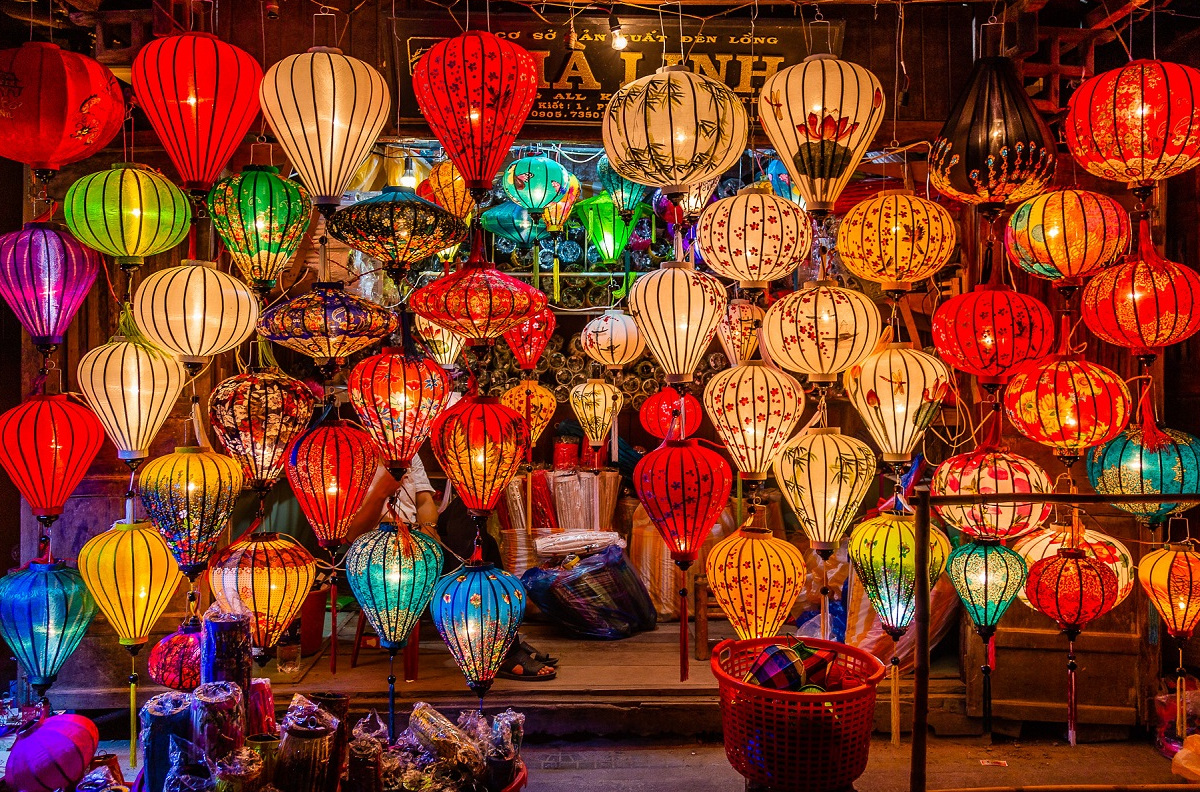
The Best Month to Visit Hoi An
The best month to visit Hoi An depends on what travellers like to do, experience and bare time. If expecting outdoor activities like on the beach or underwater adventures, the most ideal period is from February to mid-September when it doesn’t rain. To avoid crowds, overpriced offers and simply have comfort, out of the domestic high seasons are finest. There are January, mid-February to mid-April, mid-May to early September. Christmas and New year is also good, because of the coolest temperature of the year and “typhoon season” already ends. Shouldn’t come to the city when the floods occur, due to poor activities. See full information in our article for the best time to visit Hoi An.
Hoi An Weather in January
January is the last month of the wet season in Hoi An, which started with fireworks in the city square. Temperature hasn’t been much different from December. Its average high degrees is 25oC and average low degrees is 19oC. Rains may occur in 13 days, but the rainfall drops down to the lowest rate of the year at the end of the month. The daylight hours are 11,5 hrs a day, with the lowest UV index. Sunshine hours are also high, 7 hours, making January nice for beach lovers and outdoor enthusiasts to enjoy their favourite activities.
In some years, Tet holiday (Vietnamese new year) falls in January. It often lasts a week, including days before and after the eve. For locals, this time is for family reunion, and members prepare everything together to celebrate. For travellers, it’s definitely a wonderful chance to know better local culture and customs. However, due to the biggest celebration of the year, high travel prices, crowds, and shortage of hotel rooms are things that travellers should know.
Hoi An Weather in February
February is the first month of Hoi An’s dry season. Throughout its weeks, the temperature rises but the intense heat doesn’t occur yet and the rain stops falling. Sunshine hours are over 7 hours a day, coupled with minimum rainfall, making this time beautiful for a beach visit or stroll around the Ancient town. Average UV index is higher than January, reaching the maximum in the midday. Remember to bring your own sun cream, sun glasses and other sun protection gears before flying to Hoi An. If would like to buy in the city, there are many shops selling local and imported brands to check out.
For Vietnamese, February is known as “New year month”. It’s one of the busiest times of the whole year because people have to prepare things for a week of holiday. Transport hubs, markets, shophouses, eating and drinking venues (except tourist attractions) are all bustling. Streets are decorated by a density of colorful neon lights and flowers. Thus, days before the eve night are wonderful for travellers to see a lively scene of locals and photograph. Three first days are most important when visits to relative and friend houses are made. If traveling to Da Nang in this biggest festival, travellers will face overloading of tourist places, crowds everywhere, and high costs. Keep in mind to book a room early to avoid overbooking.
New Year Festival (Tet Holiday) is 11st February 2021, 1st February 2022, 22nd January 2023, 10th January 2024, and 29th January 2025.
Hoi An Weather in March
In March, it already turns into summer weather, with lots of sun and very low rainfall (least of the year). Particularly, the average high temperature of this month is 28oC, annd 21oC is for the average low temperature. Length of the day is 12.1 hours. Thanks to moderate and sunny weather, visitors gradually return to the beaches after the wet season. The chance to see sunrise and sunset is daily. Read our guide to Hoi An’s beaches prior to swimsuit on and soak in tropical waters.
Different from the previous month February (and the end of next month, April), tourist crowds aren’t seen much in March. Main reason is that domestic visitors have to return home for work. Travel prices are common, restaurants are run with a regular reschedule, and hotel room options are plenty. Thus, March is a shoulder season, one of the best months to visit Hoi An. The most special traditional event is Le Cau Ngu “the whale festival”. It’s held on the 12th, 16th, 28th day of the second lunar month by fishers in different coastal villages. This aims to honour the whale who saves and patronizes them on the sea.
Hoi An Weather in April
Weather in April is quite similar to March, but the temperature is a bit higher, averaging 23oC and 30oC. Both daylight and sunshine hours are many, 12,5 and 7 hours a day. Rainfall at this time is really low, 34mm on average, making it one of the driest months of the year. It’s nice to go to the beach for swimming, surfing and lounging under the coconut palms. The highest UV index is in the midday (from 11 a.m to 3 p.m), so locals often don’t visit. If don’t bring your own swimsuit, travellers can buy it in shops by the coast of An Bang and Cua Dai. Thanks to moderate weather, catches of fresh seafood arrive on the mainland every morning. Make sure that you know atmospheric An Bang beach’s restaurants to taste yummy platters made by them.
In the last week of April, people celebrate the Unification Day (Ngay thong nhat), commemorating the 30th April 1975 when two parts of Vietnam became one. Due to the International Workers Day, a holiday is designed and often lasts nearly a week if it coincides with the weekend. In this time, domestic tourism booms and most tourist venues and services are overbooked. Traveling to Da Nang at once? Keep in mind to book accommodation in advance. Like any other local holiday, prices are more expensive and crowds are everywhere, from transport hubs, attractions, restaurants to even streets.
Hoi An Weather in May
May is hotter than previous months, with a slight increase in temperature. Average high and low degrees are 32oC and 25oC respectively. It rains for 9 days or smaller, therefore the rainfall is low. Daylight hours between dawn and dusk are 12,9 hours. First days of May are still a Vietnamese reunification holiday, so it’s crowded and overpriced. A room reservation is extremely necessary, to get a good price and avoid overbooking. After that, the number of tourists slightly decreases but quickly rises again when the student’s summer break begins. If would like to explore gorgeous marine life at this time, seeking a snorkeling, diving or sea trekking tour in Cham Island. It’s 20 minutes by canoe from Hoi An coast.
Le Phat Dan (“Buddha birthday”) is the local festival that travellers can join in May. It takes place in Buddhist temples in the full moon of the 4th lunar month. Ceremonies, processions on the streets and vegetarian feasts are things to expect. Many local restaurants and eateries serve vegan dishes only. Therefore, travellers have a great chance to try foods never sold in common days, and know better a featured slice of local cuisine. This religious event is on 26th May 2021, 14th May 2022, 1st June 2023, and 21st May 2024.
Hoi An Weather in June
June is the beginning of the warmest period of the year (until August), with an average high temperature of 33oC. The real feel is up to nearly 40oC usually, especially throughout the midday. It has the longest day also, with an average of daylight as 13,1 hours. The rainfall again is low. So, there are no reasons to cancel a beach or island visit this month. Due to the noon heat, locals tend to go to bodies of water in the early morning, late afternoon and evening. If would like to swim or lounge on the sands, following the reschedule. Preparing a set of skin protection gear, and of course, personal swimsuit.
In Da Nang (30km to the north), semi-final competitions of the International Fireworks Festival are held, definitely are awesome to watch. Travellers can expect superb creative, colorful performances of lights on a passionate background music. The female night is on the first Saturday of July. Due to signature and reputable events of the city, should make a ticket reservation in advance to ensure the seats. See more information in our article for Da Nang’s festivals.
Hoi An Weather in July
July is the middle of the hottest period in the year that stretches from June to August. The average temperature is quite fair in June, particularly 26oC and 33oC. Although featuring a higher rainfall than previous time, generally, it’s much lower than the wet season starting from September. Because of high heat, visitors choose to depart on their day of exploration in the early morning. Locals often go back to their room or an air-conditioning place for a drink, and walk out when the temperature begins to decrease. Evening is a nice time to walk around the Old Town or head over to the breezy coast for dining. Visiting a waterpark or watching a visual cultural show can be a priority for families.
Thanks to moderate weather (no typhoons and heavy rains), Hoi An is the favourite city to visit for domestic travellers in July. Its sandy beaches, the Old town, theme parks and islands with diving spots are all busy with Vietnamese families. Water, underwater activities, outdoor celebrations, and evening entertainments are active, available to join everyday. Another reason to explain why this time is loved, is the summer break of the childrens (May to end of August). Local parents try to arrange a deserving trip for them. International tourists are not many in July because of high temperature, but if would like, radar the best hotel for yourself and book early.
Hoi An Weather in August
The weather is still hot in August, with average high temperature fluctuating between 33oC and 25oC. Skies are still clear, water is still warm, and open-air activities are still active, to take part in. Hence, a beach holiday in this month is feasible and suitable for local and expat families. Travel prices are a bit cheaper, as a result of decreasing domestic tourists. At the end of August, people have some off-work days during the Independence holiday, and travel again. Hoi An old town is busy with pedestrians and sightseers. If seeking an experience about real local life, go to Tra Que village and join a farmer’s daily work. Guided and self-guided tours are easy to make.
The most featured cultural event is Le Vu Lan (“Parents day”) or Tet Co Hon (“wandering souls”). It takes place on the 14th day of the 7th month in the lunar calendar. This humanistic, meaningful celebration aims to commemorate dead people who aren’t rebirthed yet and wander around to seek food and a place to sleep. That’s why locals prepare delicious dishes, burn incense sticks, light candles, chant Buddha teachings and pray. If someone don’t have parents anymore, they use the day to memorize father or mother who passed away.
Hoi An Weather in September
September is the beginning of the wet season. During it, the temperature drops slowly, fluctuating from 24 to 31oC on average. Rains occur in 19 days, causing a significant rise of rainfall and the average rate is 297mm. Thanks to not too hot and not too wet, this month is another good time to visit Hoi An. In the first week, crowds of local tourists appear because of the Independence holiday (the last of the year). The Old Town and beaches are busy with swimmers and families. Top tip if traveling in it, is to reserve an accommodation in advance. It’s more relaxing when visiting in the second week onwards, however, bringing a rain poncho to wear in case of the rain falls occasionally.
The Mid Autumn Festival (Tet Trung thu) is the highlight of September and the year. It’s held on the 14th day of 8th lunar month, in the full moon. During the night, millions of colorful lanterns are lit, hung up or dropped down to the river. This incredibly stunning scene draws plenty of visitors who quickly fill the Ancient town after the sunset. It’s iconic to Hoi An and unmissable. Outdoor folk performances, games, dragon and lion dances, sounds of cyclo and vendors, stir up the atmosphere. Together with a diverse street food, an experience in the Mid Autumn Festival is memorable.
Hoi An Mid-Autumn Festival is 20th September 2021, 9th September 2022, 28th September 2023, 16th September 2024.
Hoi An Weather in October
October is the wettest month of the year, with 21 rainy days and the highest rainfall. Average low and high temperatures decrease to 23oC and 29oC respectively. This makes the atmosphere more pleasant, perfect to walk around the town when rains stop pouring. Bring your own rain poncho or umbrella, waterproof shoes (if have) and more layers to wear before leaving the room. Due to cloudy skies, wet sands and cold water, the beach is just visited by local excercisers instead of plenty of tourists like in the summer. Water sports and games are not available or allowed to be arranged anymore, partially to ensure player’s safety. Cham island diving and snorkeling tours are closed, because of big and dangerous waves.
Typhoons often hit the wider area of Hoi An in October (and November), causing floods in the Old town and lowlands. How high it is depends on the rainfall and discharge plan of Thu Bon river’s dams. When the water rises, locals use a truckle to lift everything from the ground to the upper floor. Boats help to access inundated zones, and take tourists to see the “Venice of Vietnam”. See our article here to know further information about this boat ride.

Hoi An Weather in November
November is another so-wet month with highly potential typhoons and floods. It may have the worst weather of the year, so, not many domestic tourists plan to visit Hoi An this time. Similar to October, beaches, islands and other open-air activities are closed to ensure visitor’s safety. Prepare a light jacket when going out and of course, a rain gear set and waterproof shoes if have day trips away from the city center. Possibility of the floods is high, therefore travellers should choose an accommodation where they can stand outside of regularly inundated areas, like Old Town. Read our guide to the best area to stay in Hoi An to know more.
November is actually not nice to take a trip to mountains in Hoi An’s outskirts, except the My Son Sanctuary. The Golden Bridge and surroundings are soaked in dense fog, so sightseers can’t see everything. It’s extremely wet, misty and cold in this place. A ride to Hai Van Pass or the top of Son Tra Mountain is also quite a bad experience, because the outlooks are blocked by clouds and dangerous roads. However, if the rain doesn’t pour, it’s nice to tour around the city by bicycle or motorcycle.

Hoi An Weather in December
Average temperature of December varies between 20oC and 26oC. No doubt, it’s amongst the coolest months of the year. Locals call this time “the winter” and wear a coach when leaving home or office. In the first half, the tourism is low and tourists mainly are from abroad. An indoor hands-on experience like cooking class or handicraft workshop may be the best fit to hide from the rains.
Around Christmas and New Year then, holiday and winter travellers arrive at Hoi An much more and the scene of tourism becomes vibrant one more time. Hotels, restaurants, and public places are decorated by colorful lights, flowers and trees with cheerful, joyful music. People are excited for a new year coming, with a smiling face. Guided tours are potentially overbooked, such as to My Son temples or Golden Bridge.

Related Posts
Bach Ma National Park: Hiking, Trekking in Da Nang and Hoi An
Two best places for trekking and hiking in and near Da Nang are Son Tra mountain (peninsula) and Bach Ma national park. Which one is better is actually personal because these
Hoi An Wet Season: What to Do in Hoi An When It Rains?
No beach, no pool, no outdoor adventures? What to do in Hoi An when it rains? This is a very popular question from travelers who come to Vietnam in the
Thanh Ha Terracotta Park
Between 15th and 19th centuries, Hoi An was one of major stopovers for sailing merchants to trade in Southeast Asia. Meanwhile, craftspeople in its Thanh Ha village produce high-quality pottery
Vinwonders Nam Hoi An Theme Park (formerly Vinpearl Nam Hoi An)
In addition to historical and cultural attractions, nowadays Hoi An also has a couple of amusement parks to entertain. Definitely, they’re ideal places for families with children and groups of
Am Phu Cave (Hell Cave) – Things to Do in Da Nang
Although in the Marble mountains – the most visited attraction in Da Nang, travelers often miss Am Phu cave. One of reasons is that it’s mentioned much online and not
Hoi An or Hue: Which is Better?
Both Hoi An and Hue cities are in the middle of Vietnam, and they’re not far from each other (about 130 km). Therefore, for those who travel from north to
The Official Hoi An Travel Guide (MUST READ)
By the estuary of Thu Bon river, Hoi An is one of the best places to visit in Vietnam. This Vietnamese town is a package for travelers – a pretty
The Hoi An Market (Hoi An Central Market) Complete Guide
The Hoi An Market is the first market in Hoi An ever. Over centuries, it’s still the largest market in town although the town has a much bigger size than
Hoi An Memories Show: The Best of Hoi An Impression Theme Park
The Hoi An Memories Show is a famous series of outdoor performances in Hoi An at the present time. Thanks to its exceptional production and great cultural stories, it becomes
Hoi An Bridge: Famous Bridges in Hoi An
Hoi An has many bridges because it’s located at the confluence of 3 rivers: Thu Bon river, De Vong river and Truong Giang “Long river”. The distributaries of these rivers
How to Get From Hoi An to My Son Sanctuary
My Son sanctuary is one of the most popular places to visit for tourists staying overnight in Hoi An, especially those who spend many days there. It’s known for a
Hoi An’s Chinese Assembly Halls and Chinese Temples
Chinese people migrated to Hoi An from the early 17th century. Today, Chinese communities as a whole are the second most important piece to form the town’s unique culture. The foremost
Hoi An Walking Tours: Heritage, Foods, Photography & Locals
Strolling around heritage quarters with a local guide is the activity that so many travelers love to do in Hoi An. It enriches their time in this lovely town. Firstly,
Hoi An Self Guided Walking Tour – Hoi An On Your Own
Hoi An old town is friendly for pedestrians, especially during the time that motorized vehicles (scooters, cars, etc) are prohibited to move around its heritage quarters. That is safe for
How to Visit Golden Bridge Vietnam
The Golden Hand Bridge of Ba Na hills today is a dream place to visit for many travelers. Since it opened in June 2018, millions of people have set their
Unique Experiences in Hoi An and Why?
Today, travelers seek more experiences in the destination they go to. They want to have a deeper understanding about the culture of local people and interact with them. No other
An Bang Beach: A Guide to Hoi An’s Best Beach
An Bang beach now becomes a popular tourist attraction in Hoi An. It may be the best known and most convenient to reach from the town’s centre. Not only tourists,
Experiences in Hoi An: Get Insight Into Hoi An’s Local Culture
As the most unique Vietnamese town, Hoi An is definitely worth visiting. Here, visitors have many things to do and experiences for their holiday time. Everyone knows that it has
Things to Do in Ba Na Hills Besides Golden Bridge
According to local authorities, 50% of visitors coming to Da Nang and Hoi An visit the Ba Na hills. In other words, that is nearly 10 millions of people. This
Hoi An Nightlife: What to Do in Hoi An At Night?
After dark, Hoi An becomes exceptionally spectacular. If planning to stay overnight or visiting this ancient heritage town, at least travelers know that it’s “decorated” by so many colorful lanterns.
Hoi An Countryside: Villages, Rice Fields & Tours
By the coast, Hoi An is at the confluence of 3 rivers: Thu Bon river, Truong Giang river and De Vong river. This economically strategic location has supported trading activities
How to Get to Golden Bridge From Hoi An
There are many travelers visiting the Golden bridge from Hoi An. Both the bridge and the town today are must-see places in the region, so staying overnight in the town
Hoi An Entrance Fee: Old Town, Golden Bridge, My Son, More
Are you planning to visit Hoi An? And you don’t know how much cash you need to prepare for visiting places? This article lists tourist attractions in Hoi An and
Hoi An Airport: Everything You Need to Know
Hoi An is a famous tourist city in Vietnam. It’s 800 kilometers away from Hanoi, the capital of Vietnam and nearly 1,000 kilometers from Ho Chi Minh city, the biggest
Hoi An Lantern Boat Ride on Hoai River
A lantern boat ride is a thing to do that visitors must do today in Hoi An. For many centuries, locals have taken it on the Hoai river by the
Hoi An Private Car and Driver
Hoi An is one of the most popular tourist destinations in Vietnam. In the busiest year, it attracts about 9 millions visitors who come to enjoy its charming beauty, rich
What to Do in Hoi An Ancient Town
Hoi An Ancient Town is a must see, not only thanks to its world heritage title, but also to its vintage urban landscape, lots of attractions and activities. In the
Da Nang and Hoi An Itinerary for Visitors Staying Overnight in Hoi An
Da Nang and Hoi An are twin cities in the heart of Central Vietnam. Both are popular tourist destinations for either domestic or international visitors, and share many similarities. Due
Hoi An 3 Day Itinerary: A Travel Plan for 3 Days in Hoi An
3 days are a perfect duration to stay overnight in Hoi An and explore captivating places in and around it. Especially for those who travel from city to city or
Hoi An Free Things to Do: Budget Travel in Hoi An Vietnam
Travelers should know free things to do in Hoi An, to save the budget for this wonderful city and by that, can stay longer to explore. From old town, countryside







